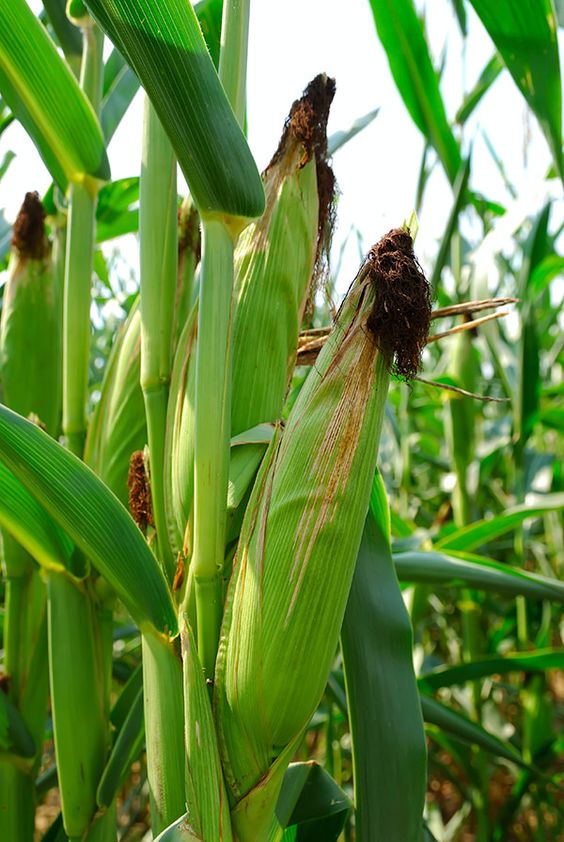Corn Plant Maintenance Made Easy: Smart Agriculture Solutions
Corn Plant Maintenance, also known as maize, is a vital cereal crop feeding billions globally. Maintaining healthy corn plants throughout their growth cycle is paramount to maximizing yields. Thankfully, advancements in smart agriculture technologies offer a plethora of tools and methods to streamline corn plant maintenance, empowering farmers to make informed decisions and optimize production.
Contents
Introduction to Smart Agriculture and Corn Plant Maintenance
Smart agriculture, a rapidly evolving field, integrates information and communication technology (ICT) with agricultural practices. This translates to utilizing sensors, data analysis, automation, and other innovative solutions to monitor crops, manage resources, and enhance decision-making for improved agricultural outcomes. In the context of corn plant maintenance, smart agriculture offers a data-driven approach for tasks like irrigation, fertilization, pest control, and disease management.
Benefits of Smart Agriculture for Corn Plant Maintenance
-
Precision Irrigation:
Traditional irrigation methods often involve scheduled watering, which can lead to overwatering or underwatering, both detrimental to corn growth. Smart irrigation systems employ soil moisture sensors that transmit real-time data on water levels. This allows for tailored watering based on the specific needs of the corn plants at any given time, optimizing water usage and promoting healthy root development. -
Data-Driven Fertilization: Proper fertilization is crucial for corn growth, but excessive fertilizer application can harm the environment and waste resources. Smart agriculture solutions like tissue testing and variable rate technology (VRT) analyze soil composition and plant health to determine the exact fertilizer requirements for different areas of the field. VRT then precisely distributes fertilizer based on this data, ensuring optimal nutrient delivery and minimizing waste.
-
Improved Pest and Disease Management:
Early detection of pests and diseases is vital for preventing significant crop losses. Smart agriculture utilizes tools like remote sensing and drone technology equipped with multispectral cameras. These tools capture aerial images that can be analyzed for signs of pest infestations, fungal growth, or nutrient deficiencies. This allows for targeted interventions, minimizing the use of pesticides and preventing widespread outbreaks. -
Enhanced Automation: Smart agriculture promotes automation in various aspects of corn plant maintenance. Automated irrigation systems, as mentioned earlier, remove the need for manual scheduling and ensure consistent watering. Similarly, some systems can automate weed control by employing robotic weeders or utilizing targeted herbicide application based on digital weed maps generated through image analysis. This automation frees up valuable time for farmers and allows them to focus on other critical tasks.
-
Real-Time Monitoring and Data Analysis: Smart agriculture facilitates continuous monitoring of cornfields through the use of weather stations, temperature sensors, and other data collection tools. This data is then analyzed by software programs that identify trends, predict potential problems, and suggest appropriate actions. Farmers can access this information remotely through mobile applications, enabling them to make informed decisions based on real-time insights.
Implementing Smart Agriculture Solutions for Corn Plant Maintenance
While the benefits of smart agriculture are undeniable, integrating these technologies into existing practices requires careful consideration. Here are some key factors for successful implementation:
-
Cost and ROI: The cost of smart agriculture technologies can vary depending on the chosen solutions. It’s essential to assess the return on investment (ROI) by considering potential yield increases, resource savings, and reduced labor costs.
-
Infrastructure and Technical Expertise: Implementing smart agriculture solutions might require additional infrastructure, such as sensor networks and internet connectivity. Additionally, some level of technical expertise is needed to operate and analyze the data generated by these systems.
-
Scalability and Integration: The chosen smart agriculture solutions should be scalable to accommodate the size and specific needs of the farm. Additionally, ensuring compatibility with existing farm management software allows for seamless data integration and facilitates a unified approach to crop management.
The Future of Smart Agriculture and Corn Plant Maintenance
The future of smart agriculture holds immense promise for further optimizing corn plant maintenance. Advancements in technologies like artificial intelligence (AI) and machine learning (ML) will lead to more sophisticated data analysis tools that can predict crop health issues even before they become visible.
Furthermore, the integration of internet of things (IoT) devices will create a more interconnected network of sensors, enabling real-time monitoring of various environmental factors affecting corn growth. Additionally, the development of autonomous agricultural robots capable of performing tasks like planting, weeding, and harvesting will further streamline corn plant maintenance and reduce labor requirements.
Conclusion Corn Plant Maintenance
Smart agriculture offers a comprehensive approach to corn plant maintenance, empowering farmers with data-driven insights and allowing for more precise resource management. By embracing these advancements, farmers can optimize corn yields, minimize environmental impact, and ensure the long-term sustainability of their agricultural endeavors. As smart agriculture technologies continue to evolve, corn production is poised to become even more efficient and resilient in the face of future challenges.




